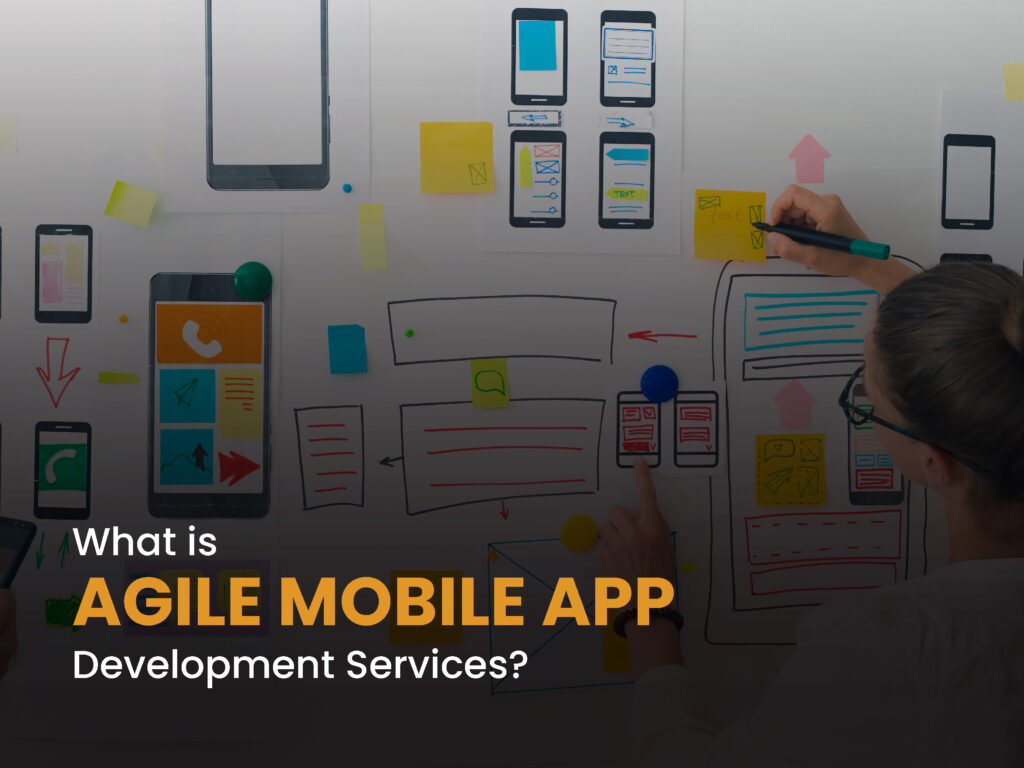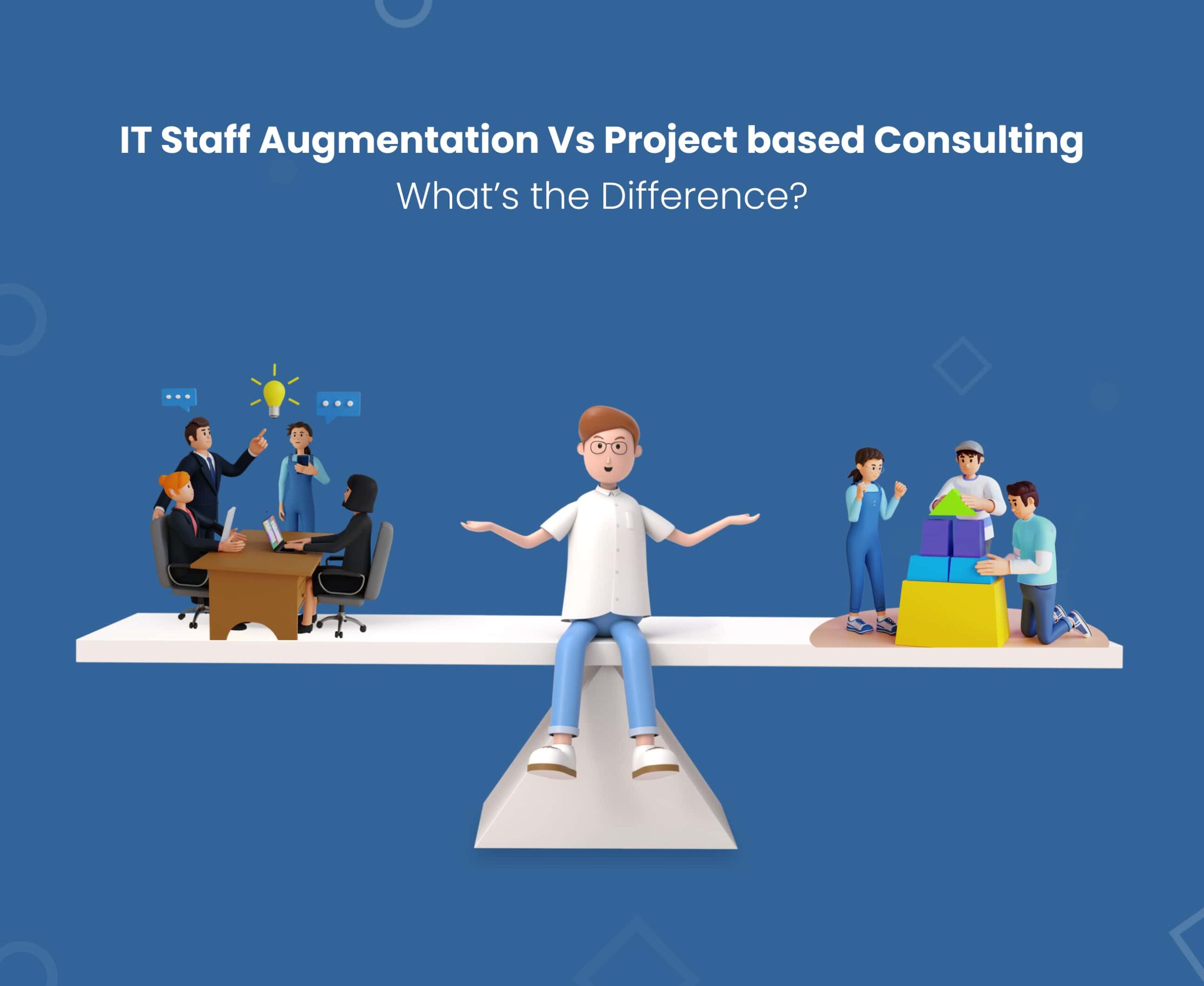Agile Methodologies is a software development project management style that focuses on breaking down the development process into smaller builds and employing sprints, which are short development phases.
What is Agile Mobile App Development Services?

The Agile Methodology refers to an incremental and iterative app development approach that involves breaking the entire app development cycle into several tasks.
The entire set of separated processes is further subdivided into a variety of sub-tasks as a separate module inside the app development team.
Each module is assigned to a dedicated cross-functional group of professionals working on each module as an individual mini-project.
Using this agile process for mobile app development allows teams to work on different aspects of the app simultaneously. The entire project becomes a collection of little modules.
The agile software development strategy reduces the related risk and gives developers complete freedom and flexibility in designing a high-quality product that quickly adapts to changes after delivery.
Now, Let’s examine why agile is excellent for app development and why you should utilize agile methodology.
10 Reasons to Trust Our Agile Mobile App Development Services
#1 Predictable costs
Agile approaches are meant to reduce expenses. Cost estimate methodologies are built on story points, a system that enables developers to precisely predict the budget.
To avoid wasting resources and time, only what is required is produced, including sprints, MVPs, and unit testing. Project managers and middlemen are not required to be on the team, which saves money.
Future sprints are built on earlier learnings, which leads to improved planning and, as a result, more cost reductions.
#2 Transparency
Everything is clearly stated, allowing all teams to align easily. Developers and project managers can monitor everything from concept to deployment and provide continuous feedback to the application before and after each sprint to guarantee all objectives are reached.
Daily reports and tools are distributed to all partners to keep everyone on the same page.
Transparent procedures enable a managed and regulated product development cycle. Project limits and blockages are addressed early on to ensure smoother delivery.
#3 Higher Quality Product
It was preferred to test the software before release. But, with agile, testing is integrated at every stage of development to ensure a high-quality end product.
This form of ongoing inspection of every module allows for changes and decreases the probability of encountering a bug during overall project quality testing.
It also enables mobile app developers to evaluate app elements at each stage of the development process and make changes as needed, ultimately assisting in providing high-quality services.
#4 On-time delivery
Sprint is the approach agile teams use that enables planned software development using sprints, usually of 1-4 weeks.
The agile, iterative strategy involves brief periods when the right thing is delivered at the right time, and each team creates software gradually.
Design and testing are done continuously to reduce Time-To-Delivery. Teams prioritize needs and streamline delivery workflows to shorten the product development cycle.
This strategy improves the classic waterfall system. It relies on working software rather than extensive documentation.
#5 User-Centered Testing
Agile is about more than just change adaptation. The product owner collaborates closely with the team to ensure that everyone understands what is required.
User requirements are represented in Agile software development as “user stories.” These stories define a value-added action for the customer.
Compared to the almost lengthy list of requirements established in a standard development methodology, the concept of user stories stands out.
#6 Improved Project Management
Teams collaborate with the product owner to decide what goes into each sprint. That way, everyone on the team is on a single page about what needs to be done.
There is also less risk of unexpected or unanticipated features making it into the build. Daily standup meetings keep everyone up to date on the state of the project, allowing concerns to be addressed immediately.
Teams can prepare for the following sprint by holding planning meetings. These reviews assist the team in learning from previous sprints and implementing new approaches to better in future sprints.
#7 Risk reduction
Throughout the product development cycle, risk management is practiced. Once the Scrum team has identified the risks, action plans are developed.
However, because of the default style of iterations and modifications and the entire project level, action plans are implemented and monitored continually.
At the project’s outset, risks are identified at a higher level. Before delivery, the top prioritized risks are analyzed and mapped using checklists.
#8 Customer Satisfaction
The project is not regarded as successful if the customer is dissatisfied and features/functions do not achieve their goal, regardless of how good the code is. Every phase should add value.
People, particularly internal stakeholders, and customers who will utilize the final product, are prioritized over processes in agile. Customer feedback is included in the process to constantly improve quality.
#9 Adapting To Changes Quickly
Even in later stages of development, changes critical to commercial value are adopted swiftly and collaboratively.
Agile teams recognize that requirements will unavoidably change throughout the product development cycle.
Because it is part of every sprint, flexibility is an excellent aspect of agile techniques. When deviations are detected, an immediate response is launched, and modifications are made.
#10 Business ROI
Along with the primary principle of satisfying customers, business value is constantly prioritized.
The product backlog is always available to development teams to produce the most functional, intermediate product on time. Each iteration needs user feedback, so each sprint adds value to the final product.
The Product Owner is in charge of maximizing ROI by prioritizing and re-prioritizing the Product Backlog. Agile strategies surpass older methods and apply Android app development trends in terms of speed and ROI.
The Types of Agile App Development

Adaptive Software Development
This strategy is utilized in software projects with changing requirements and is strictly classified as short-term app projects.
The technique employs processes such as collaboration theory and learning.
Crystal Methods
These are the techniques used to assist in the development of apps by focusing on app characteristics such as reflective improvement, frequent delivery, focus, close communication, easy access to expert users, and personal safety.
The method works well when creating apps around people, community, interaction, talents, abilities, and communication.
Dynamic Systems Development Method (DSDM)
It is an adaptive agile development technique that ensures each step is finished just enough to proceed to the next level. It aids in the delivery of functional systems in a short period.
This method aids in assisting frequently changing scenarios because the next level of the process may be easily put into action while not influencing the delivery process in any way.
DSDM employs tools, expertise, and procedures to aid in delivering new systems within the specified timeframe.
Feature Driven Development
It is the model-based agile technique for the cross-platform app development process. The developers create a model at the beginning of the app project that defines multiple app features and iterations.
Scrum
Scrum is another agile software development process that employs flexible process management for large software projects. It also uses iterative and developing strategies.
We can’t characterize the project’s final prerequisites, initially, the information is gathered using the due method from the mistakes produced in the long run.
It only focuses on monitoring the project’s development and resolving issues that arise during regular meetings. It provides the benefits of agile methodology by assisting in taking action when the requirement changes.
“Do you require a custom software development service that can produce the best results using an agile approach?” ultroNeous Technologies – a software development company that can help you at every stage of the development process.”
Wrapping It Up
Agile software creation and assessment follow a process that allows teams to deliver a working product that adds value after each sprint.
One of the process’s key concepts is to accept change. Agile custom software development service allows swiftly adjusting to changes in requirements without affecting release dates.
FAQs: Agile Mobile App Development Process
What is Agile in User Interface Design?
We define Agile as “an incremental approach to software development” in our Ul & UX Design Services. Rather than producing the full product simultaneously, Agile divides it into smaller sections of user functionality and assigns them to two-week cycles known as iterations.
What is the main difference between an Agile and a Waterfall mobile app?
The waterfall is a linear work approach in which the team must complete each project stage before moving on to the next. In contrast, Agile encourages the team to work on several project phases concurrently.
What are the five Agile software development stages?
The concept, construction, release, production, and retirement phases form the entire Agile software development lifecycle.
What exactly are the four Agile models?
– Individuals and interactions take priority over processes and instruments.
– Working software is preferred over extensive documentation.
– Customer collaboration is preferred above contract negotiation.
– Responding to change by following a strategy.
Why is the agile methodology the best choice for app development?
It enables you to adjust workflows at any stage of development. It allows an organization to modify any sprint with little resistance. Also, working in sprints allow you to test whether the product is progressing as expected.







